When a pharmacist pulls a bottle off the shelf, they’re not just picking a drug-they’re making a decision that affects safety, cost, and patient trust. The difference between a brand-name pill and its generic version isn’t just in the price tag. It’s in how the pharmacy system identifies it, what alerts it triggers, and whether the patient even knows what they’re getting. Getting this wrong can lead to confusion, adverse reactions, or lost savings. Getting it right? That’s where best practices come in.
Why Generic and Brand Identification Matters
Every prescription filled in the U.S. has a story behind it. About 90% of prescriptions are for generic drugs, yet they make up only 23% of total drug spending. That’s nearly $2 trillion saved over the last decade. But savings mean nothing if the wrong drug gets dispensed-or if the patient refuses the generic because they don’t understand it’s the same thing. The FDA defines a generic drug as identical to its brand-name counterpart in active ingredient, dosage, strength, route of administration, and performance. That’s not marketing speak-it’s science. Bioequivalence studies prove that generics perform within 80-125% of the brand’s blood concentration levels. Still, patients and even some providers worry. Why? Because systems don’t always make the difference clear.The Building Blocks: NDC Codes and TE Codes
At the heart of every drug in a pharmacy system is the National Drug Code (NDC). This 10- or 11-digit number is like a fingerprint for each version of a medication. A brand-name lisinopril 10mg tablet has one NDC. A generic version made by Teva has another. Even if they contain the exact same active ingredient, they’re different products in the system. But NDCs alone aren’t enough. That’s where Therapeutic Equivalence (TE) codes come in. These two-letter codes from the FDA’s Orange Book tell you if a generic is interchangeable with the brand. An “AB” code means it’s therapeutically equivalent. An “AP” code? That’s an authorized generic-same drug, same manufacturer, just sold under a different name. These distinctions matter. Pharmacy systems like Epic, Cerner, and Rx30 pull this data from the Orange Book, updated monthly. But here’s the catch: if your system doesn’t auto-update or relies on outdated databases, you’re working with blind spots. One pharmacist in Ohio reported her system listed 17 different NDCs for lisinopril but didn’t flag which ones were authorized generics. That’s not just inconvenient-it’s risky.When Generics Aren’t So Simple: Branded Generics and Authorized Generics
Not all generics look like generics. Take birth control pills. You’ll find brands like Sprintec, Tri-Sprintec, and Lo Loestrin Fe. But many of these are actually branded generics-medications approved through the ANDA process but sold under a proprietary name. They’re not brand-name drugs, but they’re not labeled as “generic” either. Then there are authorized generics. These are the exact same pills as the brand, just repackaged and sold cheaper. For example, the generic version of Prilosec is omeprazole. But there’s also an authorized generic of Prilosec made by AstraZeneca-the same capsule, same color, same markings. Only the label changes. Pharmacy systems often can’t tell the difference unless they’re synced with FDA’s NDA/ANDA data. This confusion isn’t theoretical. A 2022 survey found 78% of pharmacists struggled to distinguish between branded generics like Sprintec and their generic equivalents because packaging varied by distributor. That’s why training isn’t optional-it’s essential.
Narrow Therapeutic Index Drugs: Where Mistakes Can Be Deadly
Some drugs leave no room for error. Warfarin, levothyroxine, phenytoin, and cyclosporine fall into the narrow therapeutic index (NTI) category. Tiny changes in blood levels can cause blood clots, seizures, or organ rejection. Top pharmacy systems now have special flags for NTI drugs. Epic’s Beacon Oncology module, for instance, blocks automatic substitution for these medications unless manually overridden by a provider. But not all systems do this. A 2021 ISMP report documented 147 adverse events over 18 months linked to inappropriate generic switches for warfarin-mostly because the system didn’t alert the pharmacist. Even when the science says generics are safe, patient-specific factors matter. A 2020 JAMA study noted that some patients report side effects after switching from brand to generic levothyroxine, even though studies show no difference in average outcomes. Why? Manufacturing differences in inactive ingredients might affect absorption in sensitive individuals. Pharmacy systems don’t track excipients well. That’s a gap.What the Best Systems Do Differently
Kaiser Permanente’s system is a model. In 2022, they achieved a 92.7% generic dispensing rate-not by forcing it, but by designing it smartly. Their system defaults to generics. But if a prescriber writes “dispense as written” or the patient has a history of reaction, the system prompts a review. It also includes a Medication Comparison tool that shows patients side-by-side images of brand and generic versions with clear labels. Humana’s approach is equally smart. Their system suggests therapeutic alternatives and notifies the prescriber when a generic is substituted. Result? A 22% increase in generic use without a single safety incident. These systems share three traits:- They default to generic names in order entry (92% of EHRs do this, per HIMSS Analytics).
- They integrate real-time FDA Orange Book data via API-not manual uploads.
- They require staff to confirm substitutions for NTI drugs with a mandatory checkbox.
Training and Patient Communication: The Human Layer
Technology helps, but people decide. Pharmacists need training-not just on how the system works, but on the nuances: What’s an authorized generic? Why does TE code “AO” matter? How do state laws differ? California requires pharmacists to document why a brand was kept. Texas doesn’t. Florida has different rules for controlled substances. Your system might be perfect, but if your staff doesn’t know the law, you’re exposed. And then there’s the patient. A 2022 Consumer Reports survey found 89% of patients were satisfied with generics-when they understood why they were switched. Only 63% were satisfied when the change happened silently. Simple tools work: laminated cards showing brand and generic side-by-side. Printed handouts explaining bioequivalence. A quick, “This is the same medicine, just cheaper-let me show you.” That’s not extra work. It’s part of the job.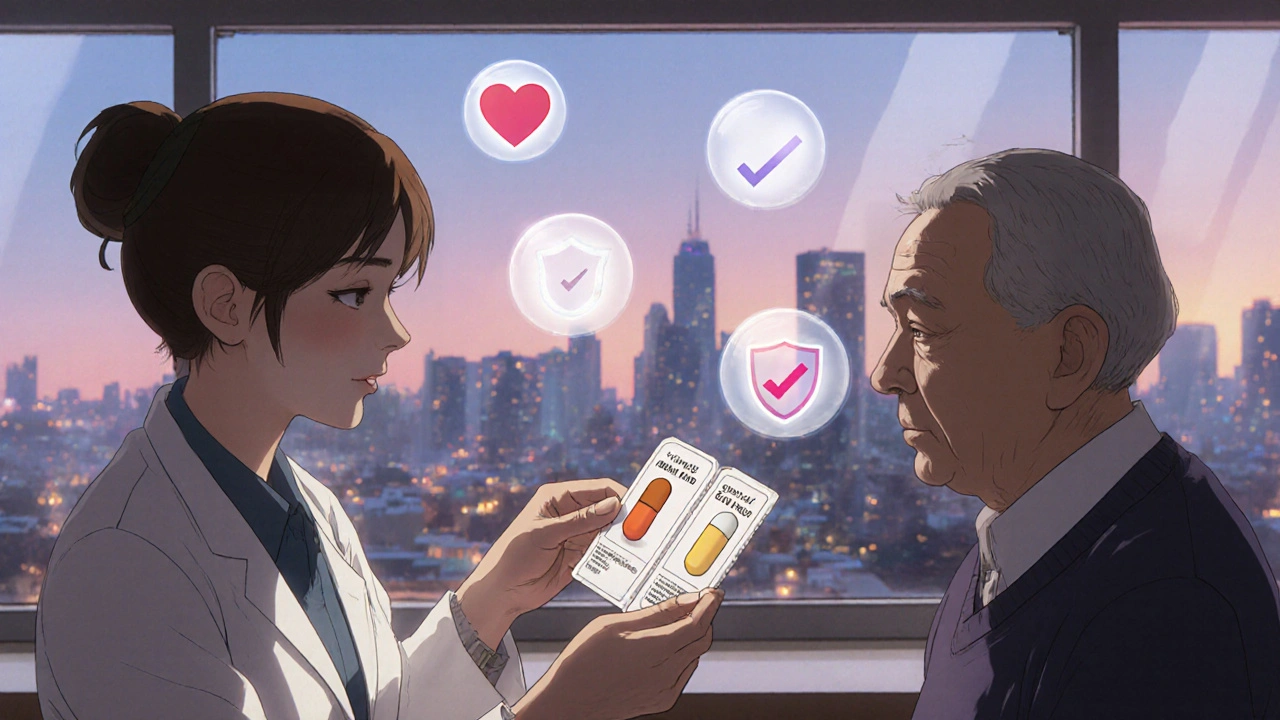
Regulatory Pressure and Tech Evolution
Medicare Part D requires pharmacy systems to use TE codes with 99.5% accuracy. The 21st Century Cures Act now mandates structured data fields in EHRs to distinguish between reference drugs, authorized generics, and branded generics. The FDA’s 2023 Orange Book modernization will move to real-time API updates, cutting the current 2-3 week lag. AI is stepping in too. A 2023 study in JAMIA showed machine learning models predicting potential equivalence issues with 87.3% accuracy-especially for NTI drugs. Future systems may integrate pharmacogenomics: if a patient has a genetic marker affecting drug metabolism, the system could auto-suggest a brand-name version. But tech alone won’t fix this. The biggest barrier isn’t software-it’s communication. Sixty-eight percent of patients still don’t know generics contain the same active ingredients as brands.What You Can Do Today
You don’t need a $2 million system to improve. Start here:- Confirm your pharmacy software pulls live Orange Book data. If it doesn’t, demand an upgrade.
- Set defaults to generic names in your order entry and dispensing screens.
- Enable NTI drug alerts. If your system doesn’t have them, create manual checklists.
- Train staff monthly on TE codes, authorized generics, and state laws.
- Keep simple patient education materials at the counter. Show, don’t just tell.
Final Thought: It’s Not About Brand vs Generic. It’s About Accuracy.
The goal isn’t to push generics. It’s to make sure the right drug gets to the right patient, at the right time, with the right understanding. Brand-name drugs aren’t better. But poorly identified generics? Those can be dangerous. The tools exist. The data is there. The laws are clear. What’s missing is consistency. Every pharmacy, big or small, can build a system that gets it right. It just takes attention to detail-and a commitment to putting patient safety ahead of convenience.Are generic drugs really the same as brand-name drugs?
Yes, by FDA standards. Generic drugs must contain the same active ingredient, strength, dosage form, and route of administration as the brand-name version. They must also meet the same strict manufacturing and quality standards. Bioequivalence studies prove they work the same way in the body. The only differences are in inactive ingredients (like fillers or dyes) and packaging-neither affects how the drug works for most people.
What does an AB rating mean on a generic drug?
An AB rating in the FDA’s Orange Book means the generic drug is therapeutically equivalent to the brand-name reference drug. It has been tested and proven to have the same rate and extent of absorption. Pharmacists can substitute AB-rated generics without needing prescriber approval in most states. Other ratings like AP (authorized generic) or AY (bioequivalence not established) require different handling.
Can pharmacists substitute generics without asking the doctor?
In 49 states, yes-if the drug has an AB rating and the prescription doesn’t say “dispense as written” or “no substitution.” Only New York requires prescriber permission for all substitutions. But even where allowed, pharmacists should check for NTI drugs, patient history, and state-specific documentation rules. Some states, like California, require pharmacists to record why a brand was kept.
Why do some patients react differently to generics?
While active ingredients are identical, inactive ingredients (excipients) can vary between manufacturers. For most people, this doesn’t matter. But for patients on narrow therapeutic index drugs like levothyroxine or phenytoin, even small changes in absorption can cause symptoms. Some patients report issues after switching-though studies show these are often due to placebo effects or unrelated changes. Still, if a patient has a history of reaction, switching should be avoided unless monitored.
What’s the difference between a generic and an authorized generic?
A generic is made by a different company than the brand, but has the same active ingredient. An authorized generic is made by the original brand manufacturer but sold under a generic label. It’s identical in every way-same factory, same ingredients, same packaging. The only difference is the label. Authorized generics often cost less than the brand but are priced higher than standard generics because they’re not competing with other manufacturers.
How often are NDC codes updated in pharmacy systems?
The FDA updates its NDC Directory about 3,500 times per month. Pharmacy systems that rely on manual uploads fall behind quickly. The best systems connect directly to the FDA’s API for real-time updates. If your system only updates quarterly or annually, you’re at risk of dispensing outdated or incorrect drug information.
Do all pharmacy systems handle NTI drugs the same way?
No. Only advanced systems like Epic and Cerner have built-in alerts for narrow therapeutic index drugs. Many smaller or older systems don’t flag them at all. This is a major safety gap. Pharmacies using basic software should create manual checklists for NTI drugs and require pharmacist confirmation before any substitution. Never rely on automation alone for these medications.

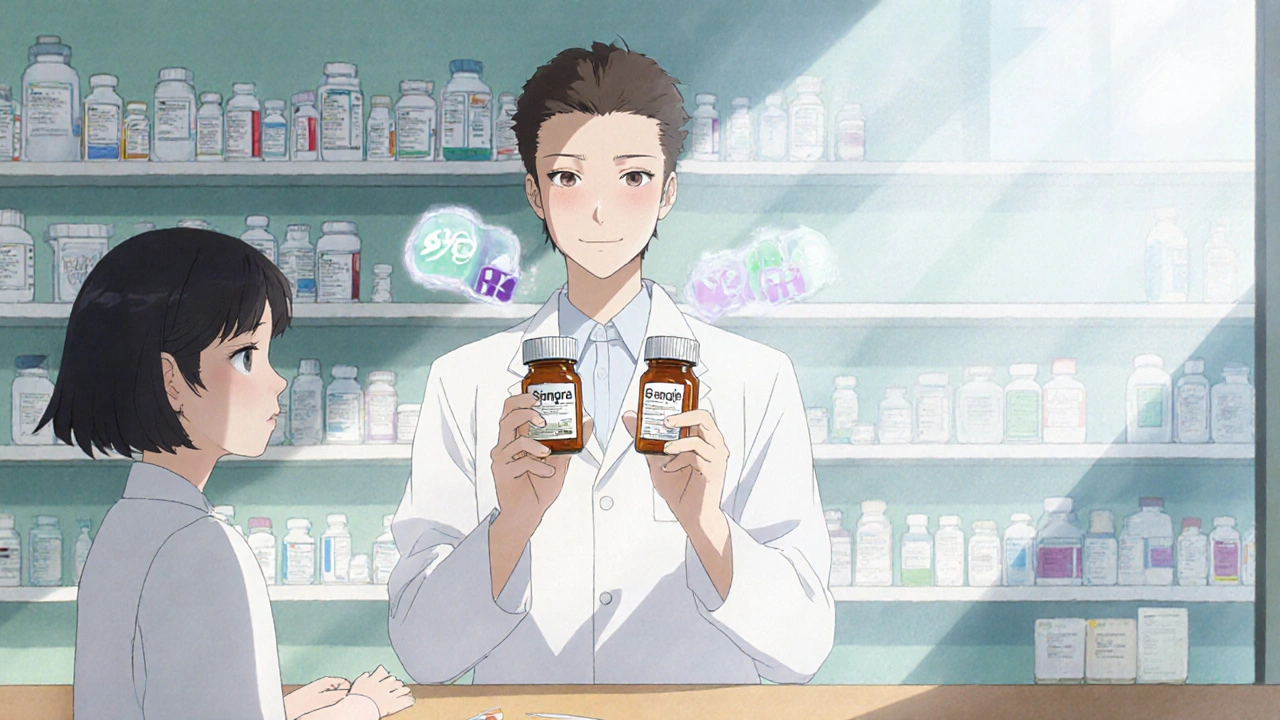
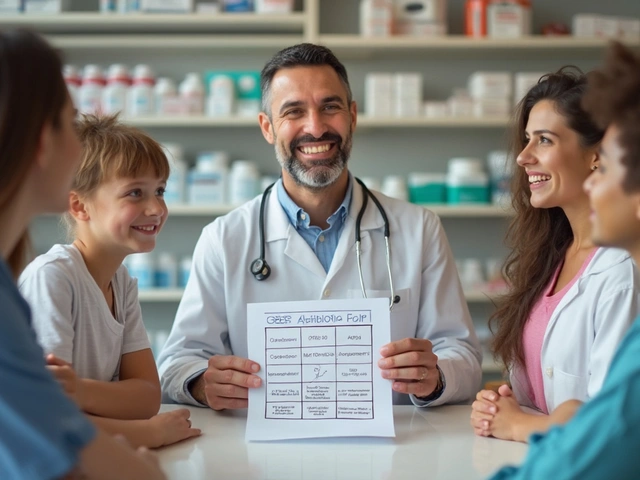
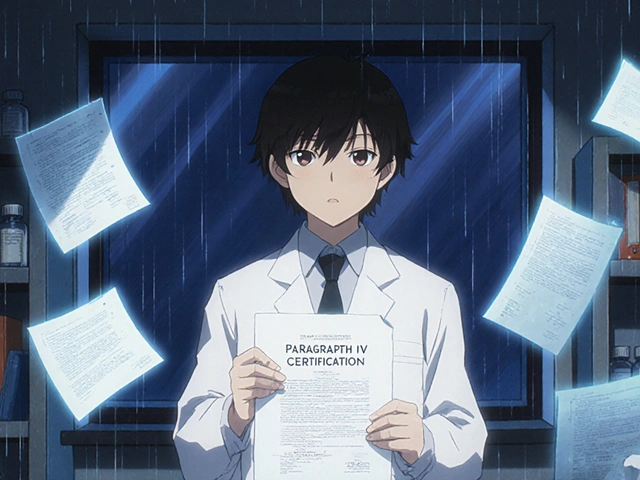


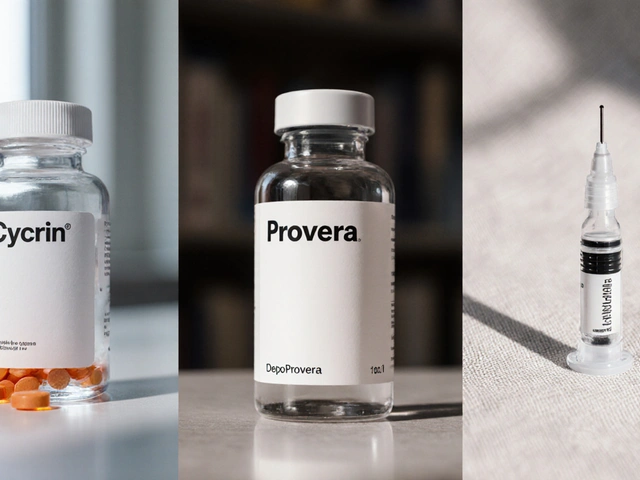
Comments
Jennifer Bedrosian
Okay but like… why do we even pretend generics are the same? My grandma switched to generic levothyroxine and started having heart palpitations. She was fine for 10 years on Synthroid. Now she’s on a different brand because the pharmacy system didn’t flag it. This isn’t science-it’s a gamble with people’s lives.
And don’t even get me started on how pharmacies just swap without telling you. I found out my blood pressure med was switched when I saw the pill color change. No warning. No explanation. Just… here’s your new pill. Thanks for the savings.
Someone needs to sue the FDA for letting this happen.
Lashonda Rene
you know what i think is wild is how we act like generics are this big scary thing but honestly most of the time they are literally the same exact thing just without the fancy packaging and the big pharma logo
like i get that for some drugs like warfarin you gotta be careful but for like 90% of meds its just a different label
my cousin works at a small pharmacy and they use this old system that updates once a year and they still get it right like 99% of the time because the pharmacists actually talk to patients
its not the tech its the person behind the counter who says hey this is the same medicine just cheaper and shows you the pill
why do we make it so complicated
Andy Slack
Look, the system works if you use it right. Kaiser and Humana proved it. The problem isn’t generics. The problem is lazy pharmacies using outdated software and skipping training.
I’ve worked in pharmacy IT for 12 years. The tech is there. APIs update in real time. NTI flags are built into Epic. But half the clinics still use Excel spreadsheets to track NDCs.
It’s not a drug issue. It’s a people issue. Fix the workflow, not the pill.
Rashmi Mohapatra
in india we dont even have this problem because generics are the ONLY option and everyone knows it
no one cares about brand names here because the system is simple: same chemical = same effect
why is america so obsessed with labels
also authorized generics? why not just call them the same thing
too much marketing too little science
Abigail Chrisma
I love how this post breaks it down without jargon. So many people think ‘generic’ means ‘cheap and weak’-but it’s not true. It’s like buying store-brand cereal. Same ingredients, different box.
What really matters is communication. When I worked at a community pharmacy, I kept laminated cards with side-by-side images of brand vs generic pills. Patients would say, ‘Oh wow, it’s the same!’ and walk out relieved.
We didn’t need fancy software. We needed to show people. That’s the real best practice.
Ankit Yadav
the real issue is that we treat patients like data points instead of humans
yes the system should auto-flag ntis and update ndc codes but no system replaces a pharmacist saying ‘hey i noticed your med changed, how are you feeling?’
also authorized generics are basically the brand but without the marketing cost-so why is there so much confusion about them
the answer is because pharma companies want you to think the expensive one is better
we need transparency not more codes
Meghan Rose
Everyone’s acting like this is a new problem. It’s not. The FDA’s Orange Book has had TE codes since the 80s. But pharmacies still don’t train their staff properly. And patients? They’re clueless. I’ve seen people refuse generics because they think they’re ‘fake’ meds.
And now you want to add AI and pharmacogenomics? Great. But first, fix the basics. Stop letting pharmacies use software that hasn’t been updated since 2018. That’s the real failure.
It’s not the generics. It’s the incompetence.
Steve Phillips
Let’s be brutally honest: the entire generic drug system is a corporate shell game. Brand-name manufacturers sell ‘authorized generics’-same pill, same factory, same everything-then charge 3x the price under a different label. Meanwhile, real generics are treated like second-class citizens.
And don’t get me started on the ‘AB’ code-it’s a joke. Two manufacturers make the same drug with different fillers, and suddenly it’s ‘therapeutically equivalent’? Please. Some people have allergies to cornstarch. Some have lactose intolerance. No system tracks that.
This isn’t healthcare. It’s a legal loophole with a pill inside.
Rachel Puno
I used to work in a rural clinic where the pharmacy system didn’t even have NTI alerts. We made our own checklist on a whiteboard. ‘Warfarin? Double-check. Levothyroxine? Confirm with patient. Phenytoin? Call prescriber.’
Simple. No app needed. Just care.
And we had 100% patient satisfaction because we told them: ‘This is the same medicine. I’ll show you the pill. Let me explain why we switched.’
Technology helps-but humanity saves lives.
Clyde Verdin Jr
Wow. So the solution to a $2 trillion savings system is… laminated cards? 😂
Let me get this straight: we’ve got AI models predicting equivalence with 87% accuracy, real-time FDA APIs, and structured EHR fields mandated by federal law… and your big idea is to hand patients a printed picture of a pill?
That’s like fixing a nuclear reactor by putting duct tape on the control panel.
This post reads like a TED Talk written by someone who thinks ‘training’ means watching a 10-minute video on YouTube. The system is broken. You don’t fix it with posters. You fix it with compliance, automation, and accountability.
Or are we just going to keep pretending ‘patient education’ is a substitute for real infrastructure?